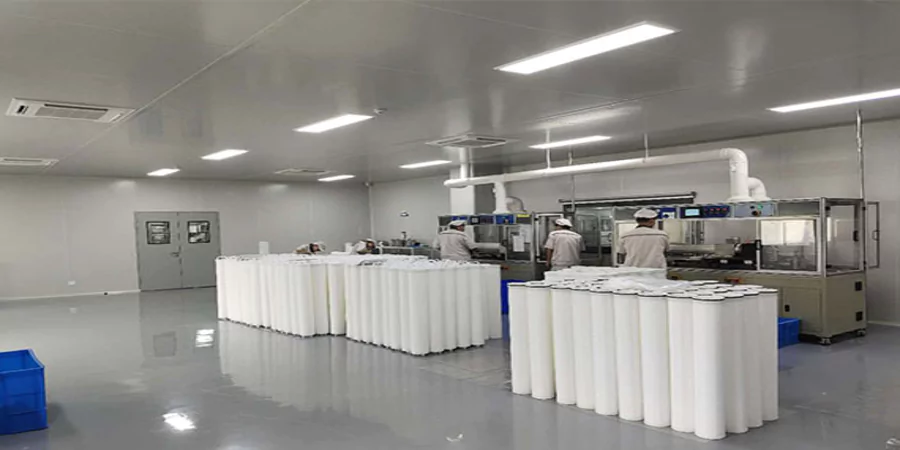The commercial fitness equipment market reached $14.8 billion globally in 2024 according to Allied Market Research, with treadmills representing the largest product category at 38% of sales yet retail success selling these high-ticket items ($3,000-$15,000+ per unit) requires substantially more than simply stocking popular brands and hoping customers purchase. Fitness equipment retailers face unique challenges: educating consumers unfamiliar with commercial-grade specifications, managing floor space constraints for bulky demonstration units, navigating complex supplier relationships with minimum order requirements, balancing inventory costs against selection breadth, and differentiating against online competitors and big-box sporting goods stores competing primarily on price. According to the National Sporting Goods Association’s 2024 Retail Insights Report, specialty fitness retailers maintaining profitable operations demonstrate three consistent characteristics: selective equipment curation based on target demographic analysis, exceptional in-store customer education and trial experiences, and strategic vendor partnerships providing competitive pricing without sacrificing service quality. For retail store owners, fitness boutique operators, and sporting goods buyers evaluating whether and how to stock commercial-grade treadmills, understanding equipment specifications, business economics, supplier evaluation criteria, and operational requirements proves essential for making investments that enhance rather than burden retail operations. This comprehensive guide examines seven critical considerations for retail stores buying commercial treadmills, supported by industry data, financial analysis, and insights from successful fitness equipment retailers.
Understanding the Commercial Treadmill Market Landscape
Market Segmentation and Target Customers
Before purchasing inventory, retailers must identify their target customer segments:
Primary Treadmill Buyer Demographics:
Home Fitness Enthusiasts:
- 35-55 years old, middle-to-upper income
- Prefer investing in quality equipment over gym memberships
- Research-intensive buyers (compare specifications, read reviews extensively)
- Price sensitivity: Moderate (prioritize value over absolute lowest price)
- Typical budget: $1,500-$4,000
Apartment/Condo Dwellers:
- 25-45 years old, urban professionals
- Space-constrained, prioritize compact/foldable models
- Noise concerns (seeking quiet operation)
- Price sensitivity: High to moderate
- Typical budget: $800-$2,500
Serious Runners:
- Any age, dedicated training regimens
- Demand commercial-grade specifications (motor power, running surface, cushioning)
- Brand-conscious (Woodway, Life Fitness, Precor recognition)
- Price sensitivity: Low (willing to pay premium for performance)
- Typical budget: $3,000-$10,000+
Rehabilitation/Medical Users:
- Older adults, physical therapy patients
- Prioritize safety features (handrails, emergency stop, low minimum speed)
- Often purchasing on medical professional recommendation
- Price sensitivity: Low (health investment)
- Typical budget: $2,000-$5,000
Small Gyms/Studios:
- Commercial buyers needing 2-10 units
- Require true commercial-grade durability
- Value service contracts and bulk pricing
- Price sensitivity: Moderate (balance quality and budget)
- Typical budget: $4,000-$8,000 per unit
Retail Strategy Implication: Stock selection, store merchandising, sales training, and marketing messaging should align with chosen target demographics. Attempting to serve all segments simultaneously creates unfocused inventory and dilutes brand positioning.
Commercial vs. Residential Grade: Critical Distinctions
Commercial-Grade Treadmills:
Construction:
- Heavy-duty steel frames (80-150+ pound frame weight)
- Commercial AC motors (3.0-5.0+ continuous horsepower)
- Industrial-grade bearings and rollers
- Reinforced decks (1-2 inch thickness)
- Commercial-grade belts (multi-ply construction)
Performance:
- Designed for 10-20+ hours daily usage
- Weight capacity: 350-500 pounds typical
- Warranty: 5-10 years frame, 3-5 years parts, 1-3 years labor (commercial warranty)
- Expected lifespan: 10-15 years with proper maintenance
Cost:
- Entry commercial: $4,000-$8,000
- Mid-range commercial: $8,000-$15,000
- Premium commercial: $15,000-$30,000+
Residential/Consumer-Grade Treadmills:
Construction:
- Lighter frames (50-80 pounds)
- Residential DC motors (2.0-3.5 CHP typical)
- Consumer-grade components
- Thinner decks (0.5-1 inch)
- Single-ply belts
Performance:
- Designed for 1-3 hours daily usage
- Weight capacity: 250-350 pounds typical
- Warranty: Lifetime frame (often), 1-3 years parts, 90 days-1 year labor
- Expected lifespan: 3-7 years with proper maintenance
Cost:
- Budget: $500-$1,200
- Mid-range: $1,200-$2,500
- Premium residential: $2,500-$5,000
Retail Decision: Many fitness retailers stock primarily high-end residential and entry-level commercial treadmills ($1,500-$6,000 price range), finding this sweet spot balances quality, customer needs, and achievable price points. True commercial-grade equipment (>$8,000) typically requires special orders due to slow inventory turnover and capital requirements.
Competitive Landscape Analysis
Direct Competitors:
Big-Box Sporting Goods (Dick’s, Academy Sports):
- Advantages: Brand recognition, high traffic, competitive pricing, broad selection
- Disadvantages: Limited expertise, minimal service, transactional experience
- Differentiation strategy: Compete on expertise, service, and specialized selection
Online Retailers (Amazon, specialized fitness sites):
- Advantages: Lowest prices, maximum convenience, extensive selection
- Disadvantages: No try-before-buy, assembly challenges, limited post-sale support
- Differentiation strategy: In-store trial, white-glove delivery/setup, ongoing service
Specialty Fitness Boutiques:
- Advantages: Expertise, curated selection, premium experience
- Disadvantages: Higher prices, limited selection breadth, geographic limitations
- Differentiation strategy: Compete on breadth within quality tiers, or specialize further (e.g., “running specialty store”)
Used Equipment Dealers:
- Advantages: Dramatic price discounts (50-70% below new)
- Disadvantages: Limited warranty, unknown usage history, selection unpredictability
- Differentiation strategy: Emphasize warranty, reliability, and new equipment benefits
According to NSGA research, successful specialty fitness retailers achieve 30-40% gross margins on equipment sales (vs. 20-25% for big-box competitors) by emphasizing value-added services: expert consultations, in-home assessments, delivery/installation, extended warranties, and ongoing maintenance justifying 10-20% price premiums over online alternatives.
Tip 1 – Specify True Commercial-Grade Equipment Appropriate for Retail Demonstration
Why Commercial-Grade Matters for Retail Environments
Retail treadmill demonstration units experience usage patterns exceeding typical home use:
Usage Intensity:
- Multiple daily trials (5-20+ different users per day)
- Extended demonstration periods (10-30 minutes per trial)
- Variable user weights and running styles
- Continuous operation during store hours (8-12 hours daily)
Abuse Factors:
- Users unfamiliar with equipment (improper use)
- Children playing on machines (unauthorized use)
- No maintenance breaks (unlike home use with rest periods)
- Inconsistent cleaning (unlike owner-maintained home equipment)
Lifespan Comparison:
- Residential treadmill in retail demo: 6-12 months before significant wear
- Entry commercial treadmill in retail demo: 2-3 years typical lifespan
- Quality commercial treadmill in retail demo: 4-6+ years with proper maintenance
Financial Analysis:
- Residential treadmill: $1,500 cost / 12 months = $125/month depreciation
- Commercial treadmill: $5,000 cost / 48 months = $104/month depreciation
- Commercial equipment actually cheaper on cost-per-month basis while providing better customer experience
Commercial Treadmill Certifications and Standards
Quality Certifications to Verify:
EN 957 (European Standard):
- Class S: Heavy commercial use (gyms, hotels, apartments)
- Class H: Home use
- Class HA: Professional home use (high-end residential)
- Retailers should stock Class HA minimum, preferably Class S for demo units
ASTM Standards (American Society for Testing and Materials):
- ASTM F2692: Standard Specification for Motorized Treadmills
- Establishes safety, performance, and durability requirements
UL/CSA Certification:
- Electrical safety certification (UL: United States, CSA: Canada)
- Essential for liability protection
- Verify before stocking any equipment
ISO 20957:
- International standard for stationary training equipment
- Part 1: General safety requirements
- Part 6: Treadmills, additional safety requirements
Evaluating Build Quality
Frame Construction:
- Welded steel construction (not bolted assemblies)
- Frame weight: 80+ pounds for entry commercial, 120+ pounds for quality commercial
- Powder-coated finish (corrosion resistance)
- Inspect weld quality (smooth, consistent, no gaps)
Running Deck:
- Thickness: 1 inch minimum (commercial), 1.5-2 inches (premium)
- Material: Phenolic or solid wood core
- Reversible decks extend lifespan (flip when one side wears)
- Cushioning system: Adjustable cushioning preferred (users can customize firmness)
Motor Specifications:
- Continuous horsepower (CHP), not peak horsepower
- 3.0 CHP absolute minimum for retail demo/resale
- 3.5-4.0 CHP recommended for serious runners
- AC motors (commercial) vs. DC motors (residential) AC more durable, efficient
Belt Quality:
- Multi-ply construction (2-4 ply)
- 2-3mm thickness
- Textured surface (traction, reduces slipping)
- Pre-lubricated or maintenance-free belts reduce service needs
Drive System:
- Front-roller drive preferred (better belt tracking, less wear)
- Roller diameter: 2.5+ inches (larger = smoother, longer belt life)
- Ball bearings (not bushings) for smoother operation
Tip 2 – Conduct Thorough Vendor Evaluation and Relationship Building
Major Commercial Treadmill Manufacturers
Premium Tier ($8,000-$30,000+):
Life Fitness:
- Industry leader, hospital/commercial gym standard
- Exceptional build quality and warranty
- Extensive dealer network and service infrastructure
- Retail consideration: Brand recognition high, but premium pricing limits home market
Precor:
- Commercial-grade excellence
- Ground Effects® impact control system (joint-friendly)
- Strong warranty and service
- Retail consideration: Similar to Life Fitness excellent quality, high price point
Woodway:
- Ultra-premium, curved manual treadmills
- Unmatched durability (20+ year lifespan)
- Niche market (serious athletes, high-end facilities)
- Retail consideration: $10,000-$15,000+ price point, limited consumer market
Matrix (Johnson Health Tech):
- Strong commercial equipment
- Good service network
- Competitive pricing vs. Life Fitness/Precor
- Retail consideration: Solid commercial option, less brand recognition among consumers
Mid-Range Commercial ($4,000-$10,000):
Sole Fitness:
- Consumer and light commercial
- Strong warranty (lifetime frame, 3-5 years parts)
- Good value proposition
- Retail consideration: Popular with home buyers seeking commercial quality at accessible prices
Spirit Fitness:
- Commercial and residential lines
- Solid construction, reasonable pricing
- Growing dealer network
- Retail consideration: Good balance of quality and price for retail
TRUE Fitness:
- Commercial heritage, heart rate control expertise
- Strong warranty and build quality
- Retail consideration: Less consumer brand recognition but excellent products
LifeSpan Fitness:
- Australian brand, growing US presence
- Commercial and residential options
- Competitive pricing
- Retail consideration: For retailers looking to buy a treadmill from Lifespan Fitness, this brand offers good value in commercial-residential crossover market
Consumer/Residential Brands (Often Carried by Retailers):
NordicTrack, ProForm (Icon Health & Fitness brands):
- Mass-market appeal, heavy advertising
- iFit integration (subscription content)
- Lower price points ($800-$3,000)
- Retail consideration: High consumer awareness but quality concerns, heavy online competition
Horizon, Vision (Johnson Health Tech brands):
- Mid-range residential
- Decent quality for price
- Retail consideration: Competitive residential market segment
Dealer Agreement Considerations
Minimum Order Requirements:
- Premium brands: Often require $50,000-$100,000 initial orders (10-20 units)
- Mid-tier brands: $20,000-$40,000 typical (5-10 units)
- Residential brands: More flexible, sometimes 2-3 unit minimums
Territorial Protection:
- Exclusive territory rights (prevents brand opening competing dealers nearby)
- Essential for protecting marketing investment
- Verify territory boundaries and exclusivity duration
Pricing and Margins:
- Dealer cost: Typically 50-65% of MSRP (35-50% gross margin)
- MAP policies: Minimum Advertised Price (prevents price wars with online competitors)
- Volume incentives: Graduated discounts based on annual volume
- Floor plan financing: Some suppliers offer inventory financing (interest-free 90-180 days)
Training and Support:
- Sales training (product knowledge, selling techniques)
- Technical training (assembly, basic repairs)
- Marketing support (co-op advertising, point-of-sale materials, digital assets)
- Demo unit programs (reduced-cost or free floor models)
Warranty Administration:
- In-warranty service: Who handles repairs? (Dealer, manufacturer, third-party?)
- Parts availability: Turnaround time for replacement parts
- Service reimbursement: Dealer compensation for warranty work
- Customer-direct warranties: Some manufacturers handle consumer warranty claims directly (reduces dealer burden)
Return Policies and Obsolescence:
- Stock rotation: Can you return slow-moving inventory?
- Model year transitions: Closeout pricing on previous years
- Obsolescence protection: What happens to unsold inventory when models discontinue?
Due Diligence Questions for Suppliers
Financial Stability:
- Years in business and ownership structure
- Market share and growth trajectory
- Customer reviews and industry reputation
- Red flags: Frequent ownership changes, bankruptcy rumors, widespread dealer complaints
Service Infrastructure:
- Service centers and technician coverage in your area
- Average parts delivery time
- Authorized service provider network
- Technical support availability (hours, phone/email/chat)
Dealer Support Quality:
- Interview existing dealers (supplier should provide references)
- Ask about responsiveness, fairness, partnership quality
- Research dealer termination history (frequent dealer turnover indicates problems)
Contract Terms:
- Minimum purchase commitments (annual and initial)
- Termination clauses (can you exit if relationship isn’t working?)
- Non-compete provisions (restrictions after termination)
- Territory modifications (can supplier change your territory?)
According to research from the Fitness Industry Technology Council, retailers with strong supplier partnerships (characterized by collaborative communication, fair terms, and mutual profitability focus) experience 40% lower inventory carrying costs and 25% higher customer satisfaction compared to transactional supplier relationships.
Tip 3 – Prioritize Key Technical Specifications Based on Customer Needs
Motor Power and Performance
Continuous Horsepower (CHP) Explained:
- Continuous: Power motor sustains indefinitely without overheating
- Peak: Maximum brief power burst (marketing number, largely irrelevant)
- ONLY evaluate CHP when comparing treadmills
Appropriate Motor Sizing:
- 2.0-2.5 CHP: Light walking, users under 200 lbs, home use only
- 2.5-3.0 CHP: Walking and light jogging, general fitness users
- 3.0-3.5 CHP: Regular running, users up to 250 lbs, light commercial
- 3.5-4.0 CHP: Serious running, heavier users, retail demo environment
- 4.0+ CHP: Commercial gym, multiple daily users, maximum durability
Motor Type:
- DC (Direct Current): Residential treadmills, lower cost, adequate for home use
- AC (Alternating Current): Commercial treadmills, more durable, efficient, longer lifespan
- Retailers should stock: 3.0+ CHP minimum, AC motors for commercial-grade units
Drive System Quality Indicators:
- Belt speed range: 0.5-12+ mph (slow walking to sprinting)
- Incline range: 0-15% minimum (some offer -3% decline to 15% incline)
- Speed/incline adjustment: Incremental buttons + quick keys (instant 3%, 6%, 9% selection)
- Noise level: <65 decibels at moderate speeds (quiet residential environments)
Running Surface Dimensions
Length Considerations:
- 45-50 inches: Walking only, shorter users
- 50-55 inches: Walking and jogging, average heights
- 55-60 inches: Running, taller users (5’10″+), athletic training
- 60+ inches: Serious athletes, very tall users, maximum comfort
Width Considerations:
- 16-18 inches: Compact/foldable models, walking primarily
- 20 inches: Standard running width, accommodates most users comfortably
- 22 inches: Premium width, larger users, extra confidence
- 24+ inches: Commercial standard, therapeutic applications
Retailer Decision Matrix:
- Primary walking customers: 50″ × 20″ adequate
- General fitness customers: 55″ × 20″ recommended
- Running enthusiasts: 60″ × 22″ preferred
- Stock variety: Offer range spanning customer needs
Weight Capacity and Structural Integrity
Weight Capacity Guidelines:
- 250 pounds: Minimum acceptable for retail (excludes significant customer segment)
- 300 pounds: Standard residential, accommodates 80% of users
- 350 pounds: Heavy-duty residential, more confident feel for all users
- 400+ pounds: Commercial-grade, bariatric applications
Structural Stability Indicators:
- Frame weight: Heavier generally indicates better construction
- Footprint size: Larger footprint = more stable (especially at incline)
- Side rails: Longer rails provide better safety (full-length preferred)
- Handlebar design: Integrated controls, ergonomic grips, easy access
Safety Features:
- Emergency stop: Magnetic safety key (clip to user, stops machine if detached)
- Soft drop hydraulics: Folding models lower gently (prevents slam injuries)
- Side steps: Non-slip surfaces for mounting/dismounting
- Transport wheels: Easy relocation (retail floor changes)
Console and Technology Features
Display Types:
- LED: Basic, low cost, clear visibility, limited info display
- LCD: Standard, more information display capacity, backlit
- Touchscreen: Premium, interactive programming, entertainment integration
- Retailers consider: LCD minimum for quality image, touchscreen for differentiation
Essential Metrics:
- Speed, time, distance, calories (universally expected)
- Heart rate (contact grips minimum, wireless chest strap compatible preferred)
- Pace (minutes per mile important for runners)
- Incline level, program information
Programming Features:
- Manual mode: User controls speed/incline (essential baseline)
- Preset programs: Hill, intervals, fat burn, cardio (8-15 programs typical)
- Custom programs: User-defined workouts (advanced feature)
- Heart rate control: Auto-adjusts speed/incline to maintain target heart rate
- Fitness tests: VO2 max estimation, fitness scoring (enthusiast feature)
Entertainment/Connectivity:
- Tablet holder: Universal device holder (cost-effective entertainment)
- Bluetooth audio: Connects personal devices to machine speakers
- Streaming integration: Peloton, iFit, Zwift compatibility (subscription-based)
- USB charging: Keeps devices powered during workouts
Retail Consideration: Don’t over-spec technology. Many buyers prefer basic, reliable machines over complex systems. Offer technology range: basic LED/LCD for value buyers, premium touchscreen for tech enthusiasts.
Tip 4 – Calculate Total Cost of Ownership and Retail Economics
Comprehensive Cost Analysis
Initial Purchase Costs:
Equipment:
- Entry commercial: $4,000-$6,000
- Mid-range commercial: $6,000-$10,000
- Premium commercial: $10,000-$15,000+
Delivery and Setup:
- Freight shipping: $200-$500 per unit (depends on distance, quantity)
- Lift gate service: $75-$150 (if no loading dock)
- Assembly: 2-4 hours × $50-75/hour = $100-$300 per unit
- Many retailers: Negotiate free freight with minimum orders
Display/Merchandising:
- Floor mats: $50-$150 per unit (protects floors, defines space)
- Signage: $50-$200 per unit (specifications, pricing, features)
- Lighting: Highlight key demo units
- Power/electrical: Dedicated circuits if multiple units
Ongoing Costs:
Maintenance:
- Commercial treadmills: $100-$300 annually per unit
- Belt lubrication: Every 3-6 months ($10-20 materials)
- Belt replacement: Every 2-4 years ($150-$400 parts + labor)
- Motor brushes (DC motors): Every 2-3 years ($50-$150)
- Professional annual service: $200-$400 per unit
Utilities:
- Running treadmill 8 hours daily: ~3-5 kWh daily
- Monthly electrical: $10-20 per unit
- Climate control (showroom cooling): Increased HVAC costs
Floor Space:
- Typical footprint: 35-40 sq ft per treadmill (including clearance)
- Retail space cost: $20-$50+ per sq ft annually (varies by location)
- Space cost per treadmill: $700-$2,000 annually
Insurance:
- Liability coverage essential (injury during demo)
- Inventory insurance (fire, theft)
- Typical increase: $500-$1,500 annually for equipment inventory
Depreciation:
- Floor models: 20-30% value loss immediately
- Annual depreciation: 15-20% of remaining value
- Plan to replace demo units every 3-5 years
Total Cost Example (Mid-Range Commercial Treadmill, 5-Year Ownership):
- Purchase: $6,000
- Delivery/assembly: $300
- Maintenance: $200/year × 5 = $1,000
- Utilities: $150/year × 5 = $750
- Floor space: $1,200/year × 5 = $6,000
- Total: $14,050 / 5 years = $2,810 annually
Retail Pricing Strategy and Profitability
Typical Markup Structure:
- Wholesale cost: 50-65% of MSRP
- Retail price: 100% MSRP (before discounting)
- Actual selling price: 80-90% MSRP (typical negotiation)
- Gross margin: 25-40% after discounting
Example Pricing:
- MSRP: $8,000
- Dealer cost: $4,800 (60% of MSRP)
- Typical selling price: $7,000 (87.5% of MSRP, 12.5% discount)
- Gross profit: $2,200 ($7,000 – $4,800)
- Gross margin: 31.4% ($2,200 / $7,000)
Value-Added Revenue Streams:
Delivery/Installation:
- Charge: $200-$400
- Cost: $100-$200 (labor, transportation)
- Profit: $100-$200 per unit
Extended Warranties:
- Sell: $300-$800 (2-5 year extended coverage)
- Cost: $100-$300 (third-party warranty provider or self-insured)
- Profit: $200-$500 per unit
- Attach rate: 30-50% of sales
Accessories:
- Mats: $75-$150 (cost $25-$50)
- Lubricants: $15-$30 (cost $5-$10)
- Maintenance kits: $50-$100 (cost $20-$35)
- Attach rate: 40-60% of sales
Financing:
- Partner with financing company (Synchrony, TD Bank, others)
- Retailer receives full payment immediately
- Customer pays monthly installments
- Increases conversion (affordability), average sale size
- Retailer may earn 1-2% financing commission
Total Profitability Example (Single $7,000 Sale):
- Equipment margin: $2,200
- Delivery: $200
- Extended warranty: $400
- Accessories: $75
- Total profit: $2,875 (41% total margin on $7,000 sale)
Inventory Management and Turn Rates
Optimal Stock Levels:
- Demo units: 3-6 models representing range (entry, mid, premium)
- Backup inventory: 1-2 best-selling models in stock for immediate sale
- Special orders: Most sales, especially premium units, via special order
Inventory Turnover:
- Industry average: 2-4 turns annually (treadmills sell every 3-6 months)
- Target: 4-6 turns annually (every 2-3 months)
- Slow movers: Markdown after 6-9 months, consider returning to supplier
Carrying Cost:
- Annual carrying cost: 15-25% of inventory value
- $100,000 treadmill inventory: $15,000-$25,000 annual carrying cost
- Faster turns dramatically improve profitability
Floor Model Sales Strategy:
- Sell demo units at discount after 12-18 months
- Typical discount: 20-30% off MSRP
- Benefits: Clears floor space, recoups investment, makes room for new models
- Labeling: “Floor Model,” “Lightly Used,” clarify condition
According to National Retail Federation data, fitness equipment retailers achieving 5+ annual inventory turns generate 35-45% higher return on invested capital compared to retailers with 2-3 turns annually emphasizing the importance of strategic inventory management over simply maximizing floor display size.
Tip 5 – Negotiate Comprehensive Warranty and Service Terms
Standard Warranty Components
Frame Warranty:
- Residential: Lifetime frame warranty common (marketing feature)
- Commercial: 5-10 years frame warranty typical
- Reality: Frame failures rare; this warranty less important than parts/labor
Motor Warranty:
- Critical component: Motor replacement expensive ($800-$2,000+)
- Residential: 3-5 years typical
- Commercial: 5-7 years typical
- Retailer priority: Longer motor warranty = fewer headaches
Parts Warranty:
- Residential: 1-3 years typical
- Commercial: 3-5 years preferred
- Covers: Electronics, belts, decks, rollers, console components
Labor Warranty:
- Residential: 90 days to 1 year typical
- Commercial: 1-3 years preferred
- Most contentious: Labor costs expensive, disputes common
Retailer Responsibility Clarification:
- Who handles service calls? (Manufacturer direct, retailer, third-party servicer)
- Reimbursement rates: If retailer provides service, what does manufacturer pay?
- Parts logistics: Who orders, ships, bills parts?
- Customer contact: Direct manufacturer-customer relationship, or retailer intermediary?
Extended Warranty and Service Contract Options
Manufacturer Extended Warranties:
- Extend coverage beyond standard warranty
- Typically 2-5 additional years
- Dealer cost: 10-20% of equipment price
- Retail price: 20-30% markup
- Profit center for retailers
Third-Party Warranty Providers:
- Companies specializing in equipment service contracts
- Often better coverage and service than manufacturer
- Examples: Service Solutions, EFG Companies
- Dealer commission: 30-50% of premium
Self-Insured Service Programs:
- Larger retailers offer own service contracts
- Hire technicians or contract with service companies
- Higher margin but requires infrastructure
- Customer peace of mind beyond manufacturer coverage
- Retailer profit margins typically 40-60%
- Differentiation from online competitors (often don’t offer extended service)
- Attach rates of 35-50% achievable with proper presentation
Service Infrastructure Requirements
In-House Service Capabilities:
Basic Service (All Retailers Should Provide):
- Assembly/setup assistance
- Troubleshooting common issues (console problems, belt tracking, calibration)
- Basic maintenance (lubrication, belt adjustment, cleaning)
- Equipment: Basic tools, lubricants, cleaning supplies
- Training: 1-2 day manufacturer training for staff
Advanced Service (Larger Retailers):
- Motor replacement and electrical repairs
- Board-level electronics troubleshooting
- Belt and deck replacement
- Equipment: Specialized tools, diagnostic equipment, parts inventory
- Personnel: Certified technician(s) on staff or contract
- Investment: $10,000-$30,000 equipment + ongoing training
Outsourced Service:
- Partner with independent service companies
- Advantages: No capital investment, expertise on demand, liability transferred
- Disadvantages: Less control, slower response, profit sharing
- Typical arrangement: Retailer marks up service 20-30%, outsources to technician
Service Response Standards:
- Warranty issues: 48-72 hour response time industry standard
- Post-warranty service: 3-5 business days acceptable
- Emergency service: Same-day or next-day premium pricing option
- Customer expectations: Set clear timelines, communicate proactively
Warranty Claims Administration
Documentation Requirements:
- Purchase receipt with date and serial number
- Warranty registration (some manufacturers require)
- Problem description with symptoms
- Photos/videos of issue (increasingly requested)
- Service history if applicable
Common Warranty Disputes:
- Normal wear and tear exclusions: Belts, decks wear with use (often not covered)
- Misuse claims: Manufacturers deny claims citing improper use
- Installation errors: Who’s responsible if assembly was improper?
- Commercial use voids residential warranty: Clear customer communication essential
Retailer Best Practices:
- Register all equipment sold (automatic warranty activation)
- Photograph equipment at delivery (documents condition)
- Provide written usage and maintenance instructions
- Follow up at 30-60-90 days (proactive issue identification)
- Advocate for customers in warranty disputes (builds loyalty)
Warranty Service Economics: According to fitness equipment service industry data, average warranty service call costs retailers $150-$300 in time, parts, and administration even when manufacturer reimburses parts and labor, profit margins erode significantly on high-warranty-claim products. Selecting manufacturers with reliable products and responsive warranty support directly impacts profitability.
Tip 6 – Prioritize User Experience and Sales Enablement Features
Console Design and Ease of Use
Critical Usability Factors:
Immediate Start Capability:
- “Quick Start” button prominently placed
- Minimal steps to begin workout (ideally 1-2 button presses)
- Demo environment: Customers should start treadmill within 5 seconds
- Complex startup sequences frustrate trial users, hurt sales
Visual Clarity:
- Large, high-contrast display (readable from 6+ feet)
- Simultaneous display of key metrics (speed, time, distance, calories)
- Backlighting for various lighting conditions
- Avoid cluttered displays overwhelming users
Intuitive Controls:
- Speed/incline adjustment: Large +/- buttons, clearly labeled
- Quick-select buttons: Instant jump to common settings (3mph, 6mph, 9mph)
- Logical layout: Related functions grouped together
- Tactile feedback: Buttons that feel responsive, provide confirmation
Instruction Clarity:
- On-screen prompts guiding users through programs
- Minimal jargon (avoid “HIIT,” “threshold,” unless explained)
- Visual indicators showing current program status
- Easy exit: Clear “stop” or “end workout” option
Common Usability Failures:
- Requiring user profile creation before starting
- Multi-step program selection processes
- Tiny buttons requiring precision pressing
- Confusing metric vs. imperial unit displays
- These issues particularly problematic in retail demo environment
Trial-Friendly Features
Demonstration Mode:
- Some commercial treadmills offer “showroom mode”
- Limits speed/incline to prevent accidents during casual demos
- Automatic timeout (returns to standby after 5-10 minutes)
- Protects equipment and users in busy retail environment
Noise Level:
- Critical for retail showrooms (affects shopping experience)
- Target: <65 dB at moderate speeds
- Test during supplier evaluation (run at 5-6 mph, measure noise)
- Quieter operation = better in-store ambiance, higher customer comfort
Smooth Acceleration:
- Gradual speed transitions (not jarring starts/stops)
- Important for trial users unfamiliar with specific machine
- Prevents stumbling during demos
- Premium treadmills feature adjustable acceleration rates
Safety During Trials:
- Long handrails (full-length preferred for anxious first-time users)
- Wide side steps (easy mounting/dismounting)
- Prominent emergency stop (clearly marked, instinctively located)
- Staff oversight: Sales associates should monitor demos, provide instruction
Comfort Features That Sell:
- Cushioned deck (reduces impact vs. outdoor running)
- Adjustable cushioning (some users prefer firmer, others softer)
- Fan: Built-in or positioned near treadmill
- Water bottle holder: Convenient, encourages longer trials
- Accessory tray: Phone, keys, remote (prevents items left on treadmill)
Sales Staff Training Requirements
Product Knowledge:
- Motor specifications and why they matter
- Running surface dimensions for different user types
- Warranty terms and coverage
- Competitive comparisons (respectful, factual)
- Maintenance requirements
Needs Assessment:
- Questions to ask: Usage frequency? Walking or running? User heights? Weight considerations? Space constraints?
- Listening skills: Customers often reveal priorities indirectly
- Budget qualification: Early discussion prevents wasted time on inappropriate options
Demo Best Practices:
- Safety briefing: Emergency stop, mounting/dismounting, speed/incline controls
- Encourage adequate trial time (10+ minutes reveals comfort/discomfort)
- Observe gait and comfort level (identify concerns customer may not articulate)
- Feature demonstration: Show programs, incline range, entertainment options
Overcoming Objections:
- Price concerns: Payment plans, financing, total cost vs. gym membership
- Space concerns: Measurements, compact options, room planning assistance
- Quality concerns: Warranty, construction details, customer testimonials
- “I’ll buy online”: Delivery/setup value, ongoing service, price-match consideration
Closing Techniques:
- Assumptive close: Discuss delivery dates, setup details
- Alternative close: “Would you prefer Model A or Model B?”
- Urgency creation: Limited inventory, promotional pricing ending, model-year transitions
- Service emphasis: Relationship continues post-sale (differentiates from online)
Training Methods:
- Manufacturer product training (attend when available)
- Role-playing exercises (staff practice demos, objection handling)
- Competitive shopping (visit competitors, understand market)
- Product use: Staff should personally use equipment (credibility, authentic recommendations)
According to research from the Retail Industry Leaders Association, effective sales associate training increases conversion rates 20-35% and reduces returns 15-25% through better needs matching and expectation setting making training investment one of the highest-ROI activities for specialty fitness retailers.
Tip 7 – Optimize Floor Planning and Merchandising Strategy
Space Allocation and Layout
Minimum Space Requirements:
- Per treadmill: 35-40 sq ft (includes machine + clearance)
- Machine footprint: Typically 30-35 sq ft (3′ × 7′ average)
- Safety clearance: 3 feet behind treadmill, 2 feet on sides (ASTM recommendation)
- Aisle width: 4-5 feet for comfortable passage
Floor Layout Strategies:
Showroom Configuration:
- Display 3-6 treadmills representing price/feature range
- Entry level: One model ($1,500-$3,000 range) demonstrating value
- Mid-range: Two models ($3,000-$5,000) where most sales occur
- Premium: 1-2 models ($5,000-$10,000+) showcasing features, creating aspiration
- Spacing: Stagger or angle treadmills (avoids “lineup” feel, maximizes space perception)
Traffic Flow Optimization:
- Position treadmills near entrance (high visibility, draw customers deeper)
- Create “trial zone” separated from main traffic (privacy, noise management)
- Consider sightlines: Demo users visible from sales desk (supervision, assistance)
- Avoid placing treadmills facing walls (claustrophobic for users)
Complementary Product Clustering:
- Group cardio equipment (treadmills, ellipticals, bikes) in dedicated zone
- Position accessories nearby (mats, lubricants, heart rate monitors, fitness trackers)
- Strength equipment separate area (different buyer profiles, noise separation)
Flooring Considerations:
- Protective mats: Under all treadmills (protects floor, reduces noise/vibration)
- Rubber flooring: Entire cardio section if possible (professional appearance, comfort, durability)
- Cost: $3-$8 per sq ft for rubber flooring
- ROI: Reduces equipment maintenance, improves customer experience
Visual Merchandising and Information Display
Signage Requirements:
Price Display:
- Clear, prominent pricing on all displayed models
- Include financing: “As low as $XX/month with 0% financing”
- Show savings: “Save $500 – Was $3,999, Now $3,499”
- Disclaimer text size appropriate (financing terms, exclusions)
Feature Comparison:
- Table or chart comparing displayed models side-by-side
- Key specifications: Motor, running surface, weight capacity, warranty
- Feature highlights: Heart rate control, programs, entertainment options
- Helps customers self-educate, initiates sales conversations
Specifications Placard:
- Attached to each treadmill (durable plastic, professional design)
- Includes: Brand, model, motor power, running surface, weight capacity, warranty summary
- QR code: Links to video demo, full specifications, reviews
- Clear font sizes (readable from 3-4 feet)
Benefits-Focused Messaging:
- Beyond specs, communicate customer benefits
- “Cushioned deck reduces impact by 30% vs. outdoor running”
- “Whisper-quiet operation – perfect for apartments”
- “Heart rate programs optimize fat burning”
- Connects features to customer needs
Lifestyle Imagery:
- Posters, video displays showing treadmill use in home settings
- Before/after testimonials (with permission, authentic stories)
- Family fitness messaging (versatile equipment for all ages)
- Aspirational but realistic (avoid intimidating ultra-fit models exclusively)
Demonstration and Trial Strategies
Encouraging Trials:
- Verbal invitation: “Would you like to try it out?” (most customers won’t ask)
- Comfortable attire consideration: Some customers reluctant in dress clothes
- Offer shoe covers or trial shoes (if willing to manage inventory/hygiene)
- Privacy: Position demos away from heavy traffic when possible
Guided Demo Script:
- Safety overview (30 seconds): Emergency stop, speed/incline controls, mounting/dismounting
- Initial settings (30 seconds): Start at comfortable walking pace (2.5-3 mph)
- Observe and adjust (2-3 minutes): Watch comfort level, suggest speed/incline changes
- Feature showcase (2-3 minutes): Demonstrate programs, entertainment, heart rate monitoring
- Comfort check (5-10 minutes): Allow extended trial at preferred settings
- Feedback gathering: “How does it feel?” “Does the speed range meet your needs?” “Any concerns?”
Post-Demo Follow-Up:
- Invite comparison trials: “Let’s try this other model to compare”
- Discuss observations: “I noticed you’re a taller runner – this 60″ deck might suit better”
- Address concerns: “You mentioned noise – this model’s exceptionally quiet”
- Move toward decision: “Which model feels best for your needs?”
Trial Tracking:
- Log customer trials in CRM (name, contact info, models tried, observations)
- Follow-up sequence: Email next day with models discussed, financing options
- Call/text after 3-5 days: “Have you made a decision? Any additional questions?”
- Persistence without pressure (long consideration periods common for $3,000+ purchases)
Seasonal and Promotional Merchandising
Peak Selling Seasons:
- January-February: New Year’s resolutions (highest sales volume, 30-40% of annual)
- May-June: Pre-summer fitness push
- September: Back-to-routine after summer
- November-December: Holiday gifts, year-end purchases
Strategic Promotion Timing:
- Maximize margin: January-February (high demand, full-price sales achievable)
- Clear inventory: March-April (post-resolution slowdown)
- Model-year transition: August-October (new models arriving, clear old inventory)
- Holiday sales: November-December (competitive with online, Black Friday/Cyber Monday)
Promotional Tactics:
- Percentage discounts: “$500 off” or “15% off MSRP”
- Bundle deals: Treadmill + mat + warranty + delivery for package price
- Financing promotions: “0% interest for 24 months” (high conversion tool)
- Trade-in programs: Offer credit for old equipment (differentiation, environmental messaging)
- Referral incentives: Reward customers who refer buyers ($100-$200 credit/discount)
Inventory Management During Promotions:
- Stock adequate inventory before peak season (avoid stockouts in January)
- Plan clearance of slow movers (discount aggressively to free capital/space)
- Coordinate with suppliers: Co-op advertising, promotional pricing support
- Marketing integration: In-store promotions aligned with advertising, email campaigns, social media
Common Mistakes Retailers Make When Buying Treadmills
Over-Investing in Technology Features
The Technology Trap: Many retailers over-emphasize technology features (touchscreens, streaming integration, AI coaching) assuming this drives sales. Reality:
Customer Priorities (Survey Data):
- Reliability and durability (78% cite as primary concern)
- Comfort and feel during use (71%)
- Price/value (69%)
- Warranty and service (61%)
- Technology features (41%)
Technology Pitfalls:
- Obsolescence: Touchscreen tech outdates quickly (tablets, apps evolve rapidly)
- Complexity: Advanced features intimidate less tech-savvy buyers
- Maintenance: Electronic components fail more frequently than mechanical
- Cost: Technology premium rarely recovers through higher selling prices
Balanced Approach:
- Stock 1-2 tech-forward models (addresses segment wanting latest features)
- Emphasize mechanical quality and reliability in sales messaging
- Focus technology discussion on practical benefits (streaming workout classes, tracking progress)
- Avoid competing purely on technology (can’t beat Peloton, NordicTrack at their game)
Insufficient Display Inventory Variety
The Overcrowding Problem: Some retailers stock excessive display inventory, creating issues:
- High carrying costs (capital tied up, space consumed)
- Overwhelming customers (choice paralysis)
- Maintenance burden (multiple units to service, clean)
- Diluted sales focus (staff can’t maintain expertise on all models)
The Under-Representation Problem: Conversely, insufficient variety creates issues:
- Can’t address diverse customer needs
- Miss sales when specific requirements arise
- Appear limited or struggling financially
- Lose credibility as specialty retailer
Optimal Display Strategy:
- 3-6 treadmills on floor: Represents price/feature range without overwhelming
- Special order capability: Extensive catalog beyond display inventory
- Digital supplement: Tablets showing full product line, videos, specs
- Rotation schedule: Change display models annually (keeps showroom fresh)
Neglecting After-Sale Service Infrastructure
The Service Gap: Many retailers focus exclusively on sales, underinvesting in post-sale support:
Consequences:
- Customer dissatisfaction (assembly issues, technical problems, warranty claims)
- Negative reviews (disproportionately impact online reputation)
- Lost accessory/service revenue
- No repeat business or referrals
Service Excellence Requirements:
- Delivery/setup: White-glove service (unpack, assemble, test, haul away packaging)
- Follow-up: 30-day check-in call (identify issues early)
- Technical support: Knowledgeable staff or service partners handling problems quickly
- Parts availability: Stock common wear items (belts, lubricants) for immediate resolution
- Proactive maintenance: Offer annual service plans (revenue + relationship maintenance)
Service as Competitive Advantage: According to National Retail Federation research, customers rate service quality as 2.4x more important than price for specialty fitness equipment purchases making service investment one of the highest-ROI differentiators against online competitors offering lower prices but minimal support.
Poor Financial Planning and Cash Flow Management
Common Financial Mistakes:
Over-Ordering:
- Optimistic sales projections leading to excess inventory
- Tying up capital in slow-moving units
- Floor space consumed by unprofitable inventory
- Mitigation: Conservative initial orders, close supplier relationships enabling quick restock
Under-Capitalized:
- Insufficient working capital for initial inventory investment
- Can’t offer competitive financing (lack of capital for receivables)
- Unable to weather seasonal sales cycles
- Mitigation: Adequate financing (line of credit), realistic revenue projections
Margin Erosion:
- Excessive discounting to move inventory
- Not capturing service/accessory revenue
- Price-matching online competitors too readily
- Mitigation: Emphasize total value (delivery, service, expertise), target sustainable margins
Neglecting True Costs:
- Focus on wholesale price, ignoring carrying costs, space, maintenance
- Total cost of ownership analysis reveals true profitability
- Some high-margin products may be unprofitable after all costs considered
Financial Best Practices:
- Detailed pro forma: Revenue projections, cost analysis, break-even calculation
- Conservative planning: Assume longer sales cycles, lower margins than hoped
- Cash flow monitoring: Weekly tracking, early problem identification
- Vendor terms negotiation: Extended payment terms, return rights, consignment arrangements
Future Trends in Treadmill Retail
Connected Fitness and Subscription Models
Market Evolution: Peloton demonstrated viability of hardware + subscription content model, creating industry-wide shift:
Implications for Retailers:
- Competition: Direct-to-consumer brands (Peloton, NordicTrack) bypass retailers
- Opportunity: Partner with connected fitness platforms, offer setup/service differentiation
- Strategy: Stock connected-capable treadmills, educate customers on subscription options
- Revenue: Potential subscription referral commissions (emerging opportunity)
Retailer Positioning:
- Emphasize flexibility: Equipment works with or without subscriptions (vs. Peloton lock-in)
- Demonstrate value: Show subscription content in-store (if WiFi available)
- Service advantage: Local support for technology issues (vs. remote-only DTC support)
Sustainability and Eco-Conscious Purchasing
Growing Consumer Trend: Younger demographics increasingly consider environmental impact:
Sustainable Treadmill Features:
- Energy generation: Some treadmills produce electricity during use
- Recyclable materials: Eco-friendly construction materials
- Longevity focus: Durable equipment = less waste (marketing angle)
- Local manufacturing: Reduced shipping impact (when available)
Retailer Opportunities:
- Partner with eco-focused brands
- Offer treadmill recycling/trade-in programs
- Communicate sustainability benefits in marketing
- Appeal to values-driven buyers (premium pricing potential)
Home Gym Integration and Smart Home Connectivity
Interconnected Fitness Ecosystems:
- Treadmills integrating with smart home systems (Alexa, Google Home)
- Data syncing across devices (treadmill → fitness tracker → smartphone app)
- Virtual training platforms (Zwift, Rouvy) gaining adoption
Retailer Adaptation:
- Staff training on technology integration
- In-store demonstrations of connectivity features
- Partnership with complementary brands (fitness trackers, apps)
- Tech-savvy sales associates (generational skill gap consideration)
Compact and Multi-Functional Equipment
Urban Living Trends: Smaller living spaces drive demand for:
- Ultra-compact treadmills (under-desk walking treadmills growing category)
- Foldable models with minimal footprint
- Multi-function machines (treadmill + strength training combinations)
Retail Response:
- Stock space-saving models prominently
- Demonstrate folding mechanisms in-store
- Offer in-home space planning services
- Partner with interior designers (space optimization consultation)
Conclusion: Strategic Treadmill Procurement for Retail Success
Stocking commercial treadmills for retail sale represents significant capital investment requiring strategic evaluation across multiple dimensions: equipment specifications matching target customer demographics, vendor relationships providing competitive pricing and reliable support, comprehensive financial analysis ensuring profitability, service infrastructure delivering post-sale satisfaction, and merchandising strategies creating compelling in-store experiences that justify premium pricing over online alternatives.
The seven tips examined specifying commercial-grade equipment appropriate for demonstration environments, conducting thorough vendor evaluation, prioritizing key technical specifications aligned with customer needs, calculating total cost of ownership, negotiating comprehensive warranty and service terms, prioritizing user experience features that facilitate sales, and optimizing floor planning and merchandising provide framework for retailers making informed treadmill procurement decisions that enhance rather than burden their businesses.
Success in fitness equipment retail demands more than simply displaying popular brands and hoping customers purchase. It requires:
Customer Understanding: Deep knowledge of target demographics, their fitness goals, space constraints, budget parameters, and decision-making processes that inform inventory selection and sales approaches.
Supplier Relationships: Strategic partnerships with manufacturers providing competitive pricing, reliable products, responsive warranty support, and collaborative problem-solving when challenges arise.
Financial Discipline: Realistic projections, careful inventory management, total cost analysis, and pricing strategies that balance competitiveness with sustainable profitability.
Service Excellence: Delivery, assembly, technical support, and ongoing maintenance capabilities that differentiate specialty retailers from online competitors and big-box stores competing purely on price.
Staff Expertise: Sales associates with product knowledge, consultative selling skills, and genuine passion for fitness who create customer experiences justifying premium pricing and generating referrals.
For retail store owners considering whether and how to stock treadmills, the market opportunity remains substantial home fitness equipment sales exceeded $12 billion annually in the United States as of 2024, with treadmills consistently representing the largest product category. However, success requires moving beyond transactional product sales toward comprehensive customer solutions encompassing education, trial experiences, customized recommendations, professional installation, and ongoing support that online retailers cannot efficiently replicate.
The retailers thriving in fitness equipment sales share common characteristics: strategic product selection based on customer analysis rather than vendor pressure, comprehensive service capabilities creating customer loyalty, expert staff providing consultative guidance, and business models treating equipment sales as relationship beginnings rather than transaction conclusions. Master these fundamentals, and treadmill sales become profitable growth drivers rather than capital-intensive struggles yielding minimal returns the difference between retail fitness success and another failed equipment venture lies not in market conditions or product quality, but in strategic execution of these proven procurement and operational principles.
















